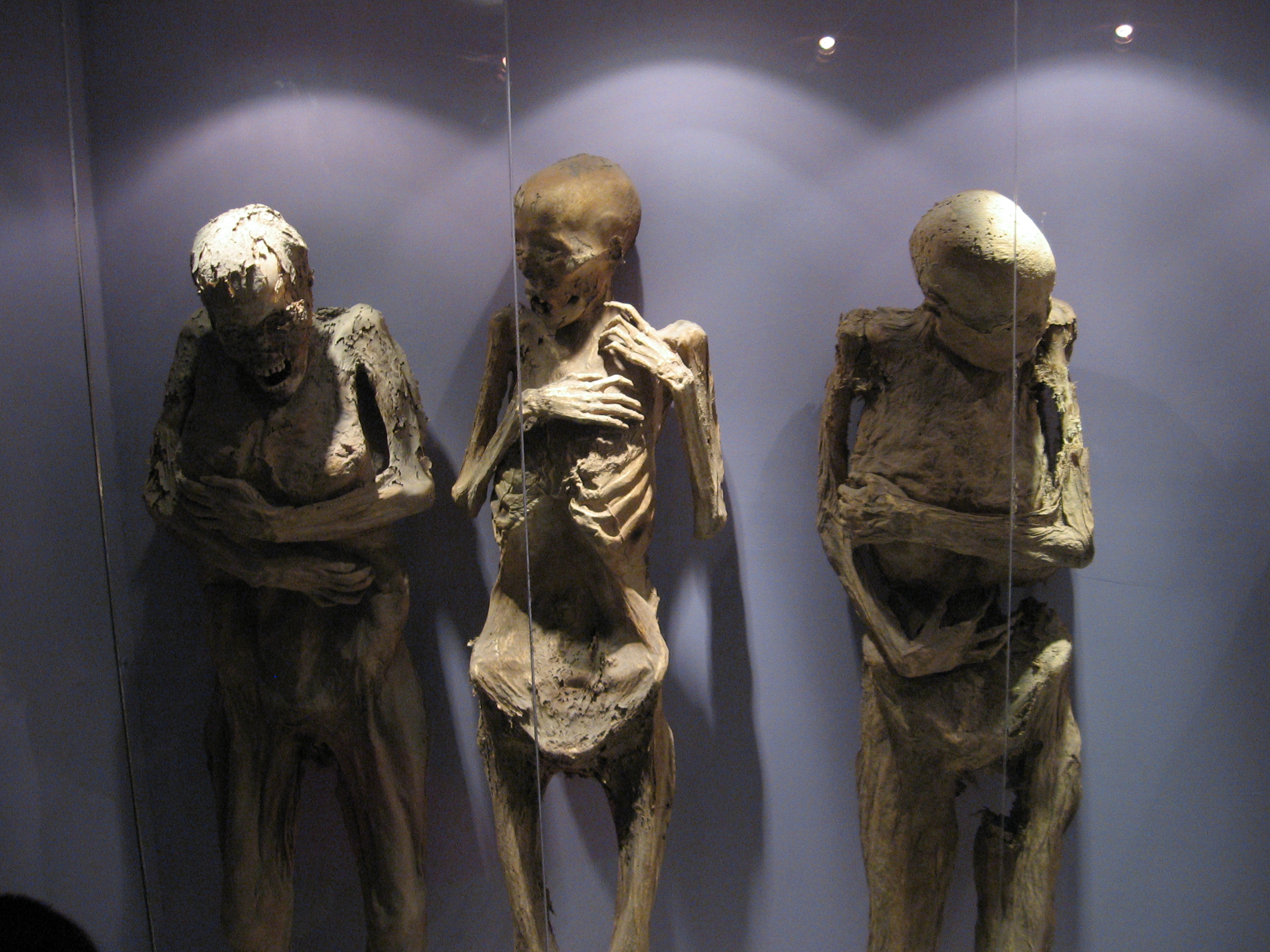The Mummies of Guanajuato are a series of naturally mummified bodies buried during a cholera outbreak in Guanajuato, Mexico in 1833. The mummies were discovered in a cemetery in Guanajuato, making the city one of Mexico’s biggest tourist attractions.
The bodies appear to have been disinterred between 1865 and 1958. During that time, a local tax was imposed requiring relatives to pay a fee to keep them buried.

Due to the weather and soil conditions, bodies tend to dehydrate and mummify in the city of Guanajuato, Mexico.
Due to the demands of the epidemic, more cemeteries had to be opened in San Cayetano and Cañada de Marfil.
The first mummy was exhibited in 1865. It was the body of Dr. Remigio Leroy.
The mummies of Guanajuato have been a notable part of Mexican popular culture, echoing the national holiday “Day of the Dead.”
This is a photo of a monument in Mexico, identified by ID Museum of the mummies of Gu.Source
In the late 1970s, filmmaker Werner Herzog shot images of several mummies for the main sequence of his film Nosferatu the Vampyre in order to evoke a morbid and creepy atmospheric opening sequence.






